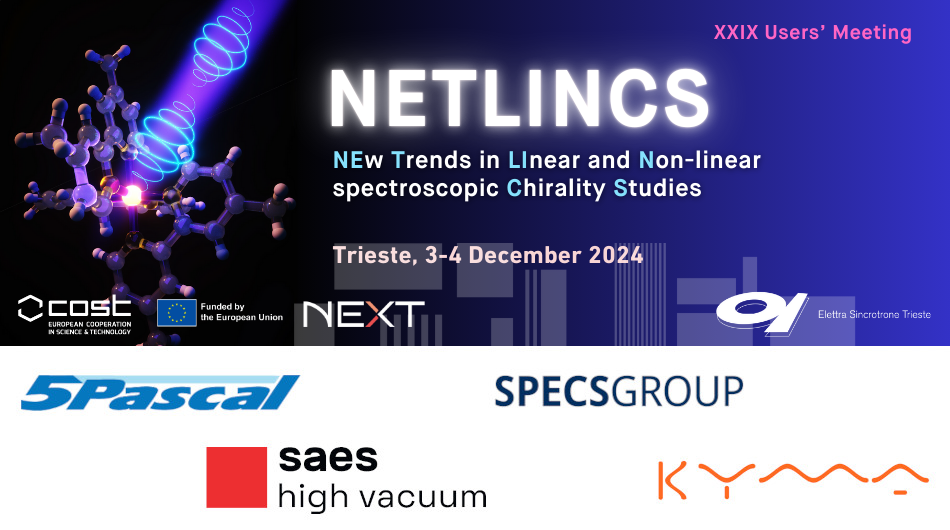Molecular chirality is a central property in Nature. However, as biological functions are homochiral, a central issue in relation to various applications is the separation and identification of enantiomers of chiral molecules. Regarding the latter, the use of short-wavelength spectroscopic methods is gaining momentum, as the sensitivity scales inversely with the wavelength of light.
Both X-ray circular (CD) and X-ray helical dichroism (HD) are being explored. Furthermore, non-linear spectroscopies in the optical domain have been shown to be promising tools for the identification of enantiomers, and are being considered in the extreme ultraviolet (EUV) to X-ray domains, as this would add element-selectivity to the enantio-selectivity. Last, when light carries an orbital angular momentum, it becomes a more reactive chiral reagent and enhances the sensitivity in distinguishing enantiomers.
The goal of the workshop NETLINCS is to capitalise on the momentum created by these various novel experiments and theoretical developments and explore and discuss strategies for their successful outcome, especially at XFELs, but also at synchrotrons and with lab-based HHG sources. It will deal with gas, liquid and solid molecular systems.
NETLINCS is a workshop co-organized by COST Action CA22148 - An international network for Non-linear Extreme Ultraviolet to hard X-ray techniques (NEXT) and Elettra-Sincrotrone Trieste.
Credits for the logo: Ella Maru Studio, Inc.

